Seven Years of Sea Slugs
 April 1, 2011
April 1, 2011

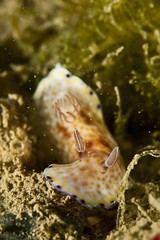

Last month, Hantu Blog volunteer guide and Dive Instructor, Jimmy Goh, took to the reefs of Pulau Hantu to celebrate the Hantu Blog’s 7th Anniversary, and to photograph a plethora of stunning sea slugs that call Singapore waters home.
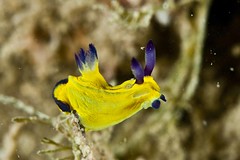
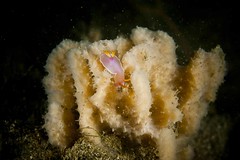
sea slug name for a marine gastropod mollusk that lacks a shell as an adult and is usually brightly colored. Sea slugs, or nudibranchs, are distributed throughout the world, with the greatest numbers and the largest kinds found in tropical waters. They creep along the bottom or cling to submerged vegetation, usually in water just below the low tide line. Members of a few species swim on the surface in open ocean.
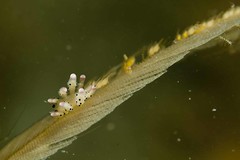
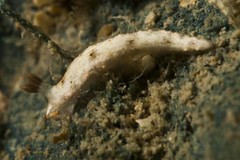
Regarded by many people as the most beautiful of marine animals, sea slugs display a great array of solid colors and patterns. Many have feathery structures (ceratia) on the back, often in a contrasting color. Most sea slugs have two pairs of tentacles on the head, used for tactile and chemosensory reception, with a small eye at the base of each tentacle.
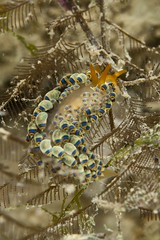
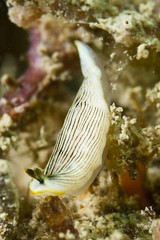

Sea slugs graze on small sessile animals such as coelenterates, sponges, and bryozoans. Certain sea slugs that feed on corals and sea anemones ingest the stinging cells of their prey without discharging them; these then pass from the slug’s digestive tract to the ceratia, where they are used by the slug for its own defense.
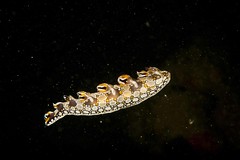
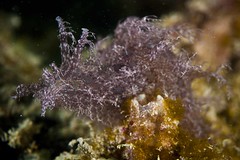
Like nudibranchs, sea hares are molluscs. Like many other sea slugs (Subclass Opistobranchia), sea hares lack external shells as adults. Sea hares belong to Order Anaspidea and are NOT nudibranchs, which belong to a different Order Nudibranchia.
Sea hares have two pairs of tentacles. The front pair (called oral tentacles) are next to the mouth and usually large and fleshy, sometimes with flaps. The second pair (called rhinophores) is further behind on top of the ‘head’ and usually smaller. The tentacles are made up of rolled tubes containing chemical sensors. Some have tiny simple eyes at the base of the rhinophores.
Sea hares have a pair of ‘wings’ or flaps (called parapodia) that cover the centre part of the body. Some sea hares can swim by flapping their parapodia.
Like other gastropods, most sea hares have a shell, but this is reduced, thin and just under the skin. These internal shells may be made of calcium or a horn-like material. Some sea hares lack internal shells. The shell encloses the gills and the heart. The body wall (called the mantle) has openings or a siphon to pump water in and out over the gills.
Sea hares can be quite large with reports of animals elsewhere reaching 60cm long and weighing 5kgs!
To see more pictures from the Hantu Blog’s 7th Anniversary Dive, visit our Gallery!
 Posted in
Posted in 



 content rss
content rss
COMMENTS